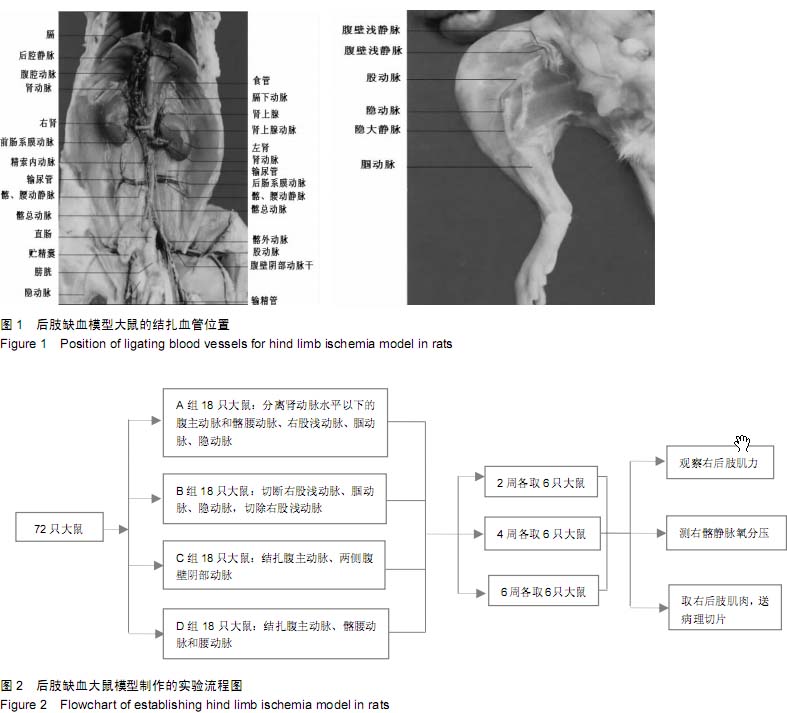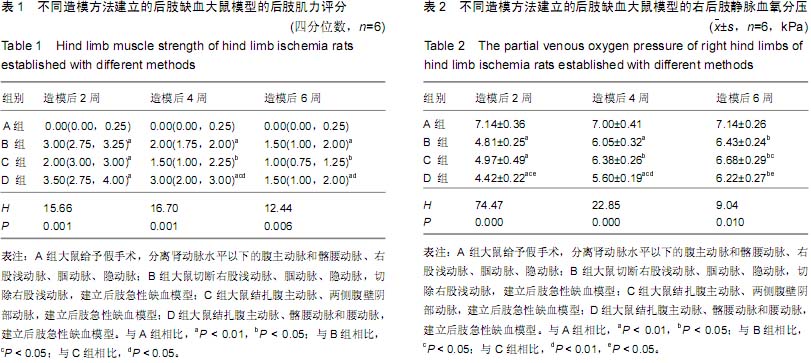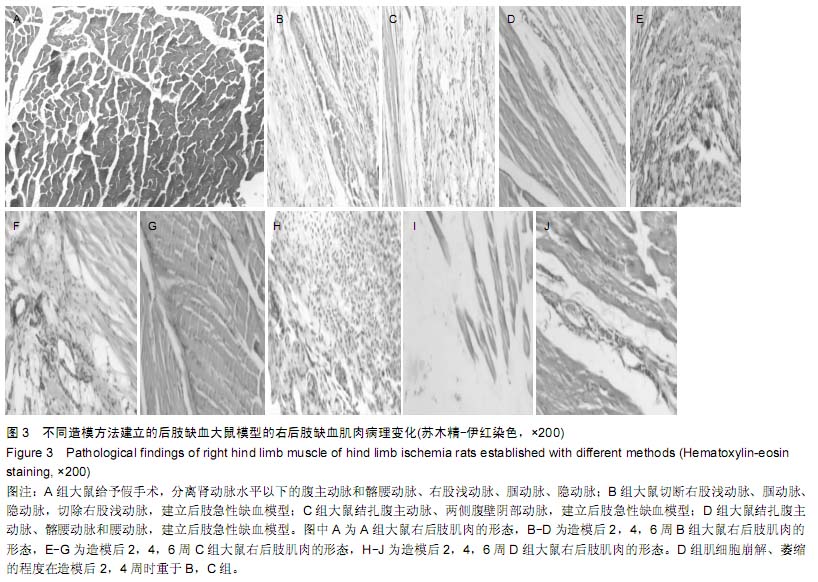| [1] 张兴.下肢慢性缺血的治疗进展[J].心血管病学进展,2013,34(3): 324-329.
[2] Egorova NN, Guillerme S, Gelijns A, et al. An analysis of the outcomes of a decade of experience with lower extremity revascularization including limb salvage, lengths of stay, and safety. J Vasc Surg. 2010;51(4):878-885, 885.e1.
[3] de Franciscis S, Gallelli L, Battaglia L, et al. Cilostazol prevents foot ulcers in diabetic patients with peripheral vascular disease. Int Wound J. 2013. in press.
[4] Souza Júnior SS, Moreira Neto AA, Schmidt Júnior AF, et al. Biochemical study of the effects of cilostazol in rats subjected to acute ischemia and reperfusion of hind limbs. Acta Cir Bras. 2013;28(5):361-366.
[5] Vandvik PO, Lincoff AM, Gore JM, et al. Primary and secondary prevention of cardiovascular disease: Antithrombotic Therapy and Prevention of Thrombosis, 9th ed: American College of Chest Physicians Evidence-Based Clinical Practice Guidelines. Chest. 2012;141(2 Suppl): e637S-668S.
[6] Hori K, Tsujii M, Iino T, et al. Protective effect of edaravone for tourniquet-induced ischemia-reperfusion injury on skeletal muscle in murine hindlimb. BMC Musculoskelet Disord. 2013; 14:113.
[7] Liang H, Yu F, Tong Z, et al. Effect of ischemia post- conditioning on skeletal muscle oxidative injury, mTOR, Bax, Bcl-2 proteins expression, and HIF-1α/β-actin mRNA, IL-6/ β-actin mRNA and caveolin-3/β-actin mRNA expression in ischemia-reperfusion rabbits. Mol Biol Rep. 2013;40(1):507-514.
[8] Li BY, Li XL, Gao HQ, et al. Grape seed procyanidin B2 inhibits advanced glycation end product-induced endothelial cell apoptosis through regulating GSK3β phosphorylation. Cell Biol Int. 2011;35(7):663-669.
[9] 王雁彬,李廷荃,化金凤,等.鹿茸对大鼠下肢缺血模型CD34+、FLK-1+阳性细胞比例影响[J].辽宁中医药大学学报,2015,17(1): 24-26.
[10] Schwarzwalder U, Zeller T. Below-the-knee revascularization. Advanced techniques. J Cardiovasc Surg (Torino). 2009; 50(5):627-634.
[11] Giles TD, Sander GE, Nossaman BD, et al. Impaired vasodilation in the pathogenesis of hypertension: focus on nitric oxide, endothelial-derived hyperpolarizing factors, and prostaglandins. J Clin Hypertens (Greenwich). 2012;14(4):198-205.
[12] Rand T, Uberoi R. Current status of interventional radiology treatment of infrapopliteal arterial disease. Cardiovasc Intervent Radiol. 2013;36(3):588-598.
[13] 王晓威,于振海.人工血管搭桥术后或介入治疗术后血管通畅率的研究[J].中国现代普通外科进展,2012,15(2):123-145.
[14] Yongquan G, Lianrui G, Lixing Q, et al. Plaque excision in the management of lower-limb ischemia of atherosclerosis and in-stent restenosis with the SilverHawk atherectomy catheter. Int Angiol. 2013;32(4):362-367.
[15] Brazeau NF, Pinto EG, Harvey HB, et al. Critical limb ischemia: an update for interventional radiologists. Diagn Interv Radiol. 2013;19(2):173-180.
[16] Dhinsa BS, Adesida AB. Current clinical therapies for cartilage repair, their limitation and the role of stem cells. Curr Stem Cell Res Ther. 2012;7(2):143-148.
[17] 陈明卫,李燕萍,唐益忠,等.不同来源和移植途径的自体干细胞治疗糖尿病缺血性下肢血管病变的随机对照研究[J].中华临床医师杂志:电子版,2013,7(14):6418-6423.
[18] Gu Y, Zhang J, Guo L, et al. A phase I clinical study of naked DNA expressing two isoforms of hepatocyte growth factor to treat patients with critical limb ischemia. J Gene Med. 2011; 13(11):602-610.
[19] Li M, Zhou H, Jin X, et al. Autologous bone marrow mononuclear cells transplant in patients with critical leg ischemia: preliminary clinical results. Exp Clin Transplant. 2013;11(5):435-439.
[20] Subrammaniyan R, Amalorpavanathan J, Shankar R, et al. Application of autologous bone marrow mononuclear cells in six patients with advanced chronic critical limb ischemia as a result of diabetes: our experience. Cytotherapy. 2011; 13(8): 993-999.
[21] Murphy MP, Lawson JH, Rapp BM, et al. Autologous bone marrow mononuclear cell therapy is safe and promotes amputation-free survival in patients with critical limb ischemia. J Vasc Surg. 2011;53(6):1565-1574.e1.
[22] Qin SL, Li TS, Kubo M, et al. Transient increase of cytokines in the acute ischemic tissue is beneficial to cell-based therapeutic angiogenesis. Circ J. 2008;72(12):2075-2080.
[23] Wragg A, Mellad JA, Beltran LE, et al. VEGFR1/CXCR4- positive progenitor cells modulate local inflammation and augment tissue perfusion by a SDF-1-dependent mechanism. J Mol Med (Berl). 2008;86(11):1221-1232.
[24] Iohara K, Zheng L, Wake H, et al. A novel stem cell source for vasculogenesis in ischemia: subfraction of side population cells from dental pulp. Stem Cells. 2008;26(9):2408-2418.
[25] Tajima H, Iwai-Takano M, Yaoita H, et al. Mast cells contribute to flow restoration by bone marrow cell transplantation in rats with ischemic limbs. Int Heart J. 2009;50(2):247-257.
[26] 汪忠镐,李震.我国血管外科的现状和发展[J].中国普外基础与临床杂志,2006,13(6):625-628.
[27] 张弛,肖日军,张娜,等.脐血干细胞移植治疗糖尿病大鼠下肢缺血的实验研究[J].中华损伤与修复杂志(电子版),2012,7(1):12-16.
[28] Hamada Y, Gonda K, Takeda M, et al. In vivo imaging of the molecular distribution of the VEGF receptor during angiogenesis in a mouse model of ischemia. Blood. 2011; 118(13):e93-e100.
[29] 梁翠宏.Wistar大鼠后肢缺血模型的实验研究[D].济南:山东大学, 2005.
[30] Ubbink DT, Vermeulen H. Spinal cord stimulation for non-reconstructable chronic critical leg ischaemia. Cochrane Database Syst Rev. 2005;(3):CD004001.
[31] 钟咏红.干细胞移植治疗糖尿病下肢血管病变:细胞因子与血管新生[J].中国组织工程研究,2014,18(32):5225-5229.
[32] 赵金武,王晓玲,刘红宇,等.下肢动脉硬化闭塞症206例外科手术治疗经验[J].中国老年学杂志,2013,33(23):6022-6023.
[33] 丁敏勇,周子花,叶永根.急性下肢动脉缺血的个体化诊治[J].中华老年心脑血管病杂志,2014,16(8):867-868.
[34] 何明坤,黄萍,傅明捷.注射用丹参多酚酸盐治疗下肢慢性缺血性疾病的临床研究[J].广州医药,2013,44(3):24-27.
[35] 谷涌泉.下肢动脉硬化闭塞症的外科治疗[J].中国血管外科杂志(电子版),2014,6(2):65-67.
[36] 尹德馨,李叶舟,孙大军,等.杂交手术治疗多平面动脉硬化闭塞症36例[J].中国老年医学杂志,2013,33(9):2151-2153.
[37] 王佩双,胡何节,方征东,等. 股腘动脉闭塞腔内成形术与旁路转流术的临床疗效对比分析[J].中国血管外科杂志,2014,6(1): 41-44.
[38] 赵巨伟,仇晓华,陈为国.动静脉转流术治疗下肢动脉闭塞性缺血[J].健康必读(中旬刊),2013,12(8):227.
[39] 黄新天,刘晓兵.下肢重症缺血:腔内治疗时代的来临[J].中国血管外科杂志(电子版),2013,5(2):65-68.
[40] 李孝成,潘光栋,肖运平,等.导管溶栓治疗急性下肢缺血30例[J].介入放射学杂志,2014,23(3):250-252.
[41] 冯海,陈学明,李晨宇,等.股总动脉内膜切除联合股浅动脉支架植入治疗慢性下肢缺血[J].中华普通外科杂志,2014,29(8):292- 295.
[42] Sumi M, Sata M, Toya N, et al. Transplantation of adipose stromal cells, but not mature adipocytes, augments ischemia-induced angiogenesis. Life Sci. 2007;80(6):559- 565.
[43] Padilla L, Krötzsch E, Schalch P, et al. Administration of bone marrow cells into surgically induced fibrocollagenous tunnels induces angiogenesis in ischemic rat hindlimb model. Microsurgery. 2003;23(6):568-574.
[44] 刘文亮,尹邦良,喻风雷,等.骨髓单个核细胞缺血组织局部移植对血运重建的影响[J].中南大学学报(医学版),2004,29(5): 572-576.
[45] Hiasa K, Ishibashi M, Ohtani K, et al. Gene transfer of stromal cell-derived factor-1alpha enhances ischemic vasculogenesis and angiogenesis via vascular endothelial growth factor/endothelial nitric oxide synthase-related pathway: next-generation chemokine therapy for therapeutic neovascularization. Circulation. 2004;109(20):2454-2461.
[46] Sato Y, Matsui K, Ajiki T, et al. Can a bone marrow cell contribute to organ regeneration? In vivo analysis using transgenic rats with reporter genes. Transplant Proc. 2005; 37(1):273-275.
[47] Otsuka H, Akashi H, Murohara T, et al. The prostacyclin analog beraprost sodium augments the efficacy of therapeutic angiogenesis induced by autologous bone marrow cells. Ann Vasc Surg. 2006;20(5):646-652.
[48] de Nigris F, Balestrieri ML, Williams-Ignarro S, et al. Therapeutic effects of autologous bone marrow cells and metabolic intervention in the ischemic hindlimb of spontaneously hypertensive rats involve reduced cell senescence and CXCR4/Akt/eNOS pathways. J Cardiovasc Pharmacol. 2007;50(4):424-433.
[49] 汪忠镐,李震.我国血管外科的现状和发展[J].中国普外基础与临床杂志,2006,13(6):625-628.
[50] 彭新桂,柏盈盈,居胜红.小鼠下肢急性缺血模型的制作及影像评价[J].东南大学学报(医学版),2014,33(3):254-259.
[51] 董素明,常文凯,罗俊茜,等.下肢缺血再灌注损伤模型大鼠接受依达拉奉干预后的超微结构变化[J].中国组织工程研究,2014, 18(18):2867-2871.
[52] Ziegler MA, Distasi MR, Bills RG, et al. Marvels, mysteries, and misconceptions of vascular compensation to peripheral artery occlusion. Microcirculation. 2010;17(1):3-20. |


